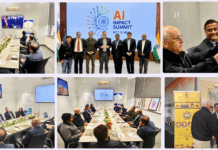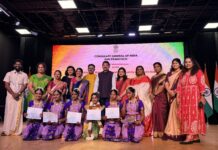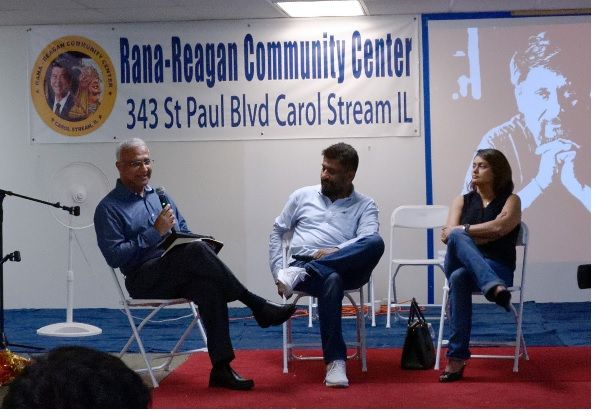
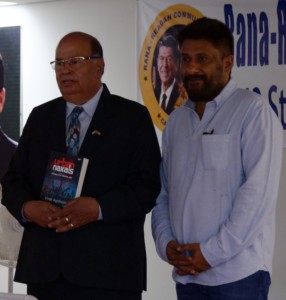
Elizabeth Chalier-Visuvalingam
CHICAGO: Indian filmmaker Vivek Agnihotri discussed ‘Urban Naxals: The Making of Buddha in a Traffic Jam’ (published June 2018) at the Rana-Reagan Community Center in Carol Stream, Illinois, June 24.
Instead of reading out passages or presenting the book, the author spent a good forty minutes sharing his appreciation for Indic civilization’s rich cultural and ideological diversity from the most ancient times that stands in stark contrast to the growing polarizations of today, not just in India.
His ongoing book launch itinerary is hosted by Indic Academy (IA), which its U.S. coordinator, Avatans Kumar, introduced as promoting an indigenous Indian perspective on contemporary issues. It was IA founder-director Hari Kiran Vadlamani, who had insisted that Agnihotri write this account of the almost insurmountable challenges the author faced in producing the movie and then in marketing it, even before its commercial release, at institutions of higher learning across India. Chief guest Sohan Joshi set an example by bidding competitively to purchase a copy of the book for a hundred dollars to promote Agnihotri’s campaign.
The panel included Agnihotri’s actress-wife, Pallavi Joshi, who plays a lead role in the movie, and Sunthar Visuvalingam, independent researcher and Indologist, who took it upon himself to acquaint the NRI audience with the book content and the stakes involved. Noting that most of Agnihotri’s virulent detractors and cheerleaders do not seem to have watched the movie or read the book, he began by pointing out that such Hindu diversity has been feasible only because of sustained internal dialogue between opposing points of view that was continually extended to include others originally beyond the pale.
More than a filmmaker, who is using an imaginary narrative to reveal the hidden truth of the outside world more effectively than a factual documentary, Agnihotri was praised as an authentic artist who has transmuted his personal tribulations into a shared creation with universal appeal. Making and marketing this ‘Buddha’ became a spiritual quest (sadhana), an ongoing process of self-discovery.
At the same time, Visuvalingam read out a revealing passage to argue that Agnihotri, who was himself indoctrinated with Naxal sympathies during his student days, has much more in common with leftist opinion-makers, such as Arundhati Roy, whom he otherwise rudely and perhaps uncharitably chastises. Their assessment of the plight of India’s oppressed, exemplified here by its aboriginal (Adivasi) population is the same, even if the proposed solutions are diametrically opposed.
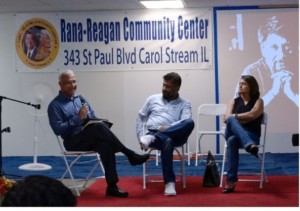
Voiced by the student protagonist of the movie, the apparent panacea of teaching the poor how to make money and become rich, is integral to, if not at the origin, of the Naxal problem. Agnihotri clarified that he does not equate “making money” with unbounded (capitalist) “greed” but rather the unleashing of self-reliance, free enterprise, and banishing the guilt associated with material success that decades of socialism have inculcated among Indians, especially through the anti-rich ideological lens of early Bollywood movies.
Agnihotri then responded to questions fielded by the audience: how should Hindus, who have remained meekly silent for so long, start publicly reaffirming their civilizational pride without appearing arrogant; are there upper and lower limits to the tolerance that is said to define Indic culture; what accounts for the seductive spell of leftist ideology and can it be so readily be attributed to a single mentor; etc.
Vivek and Pallavi will be returning to Chicago to participate in World Hindu Congress (September 7-9).



